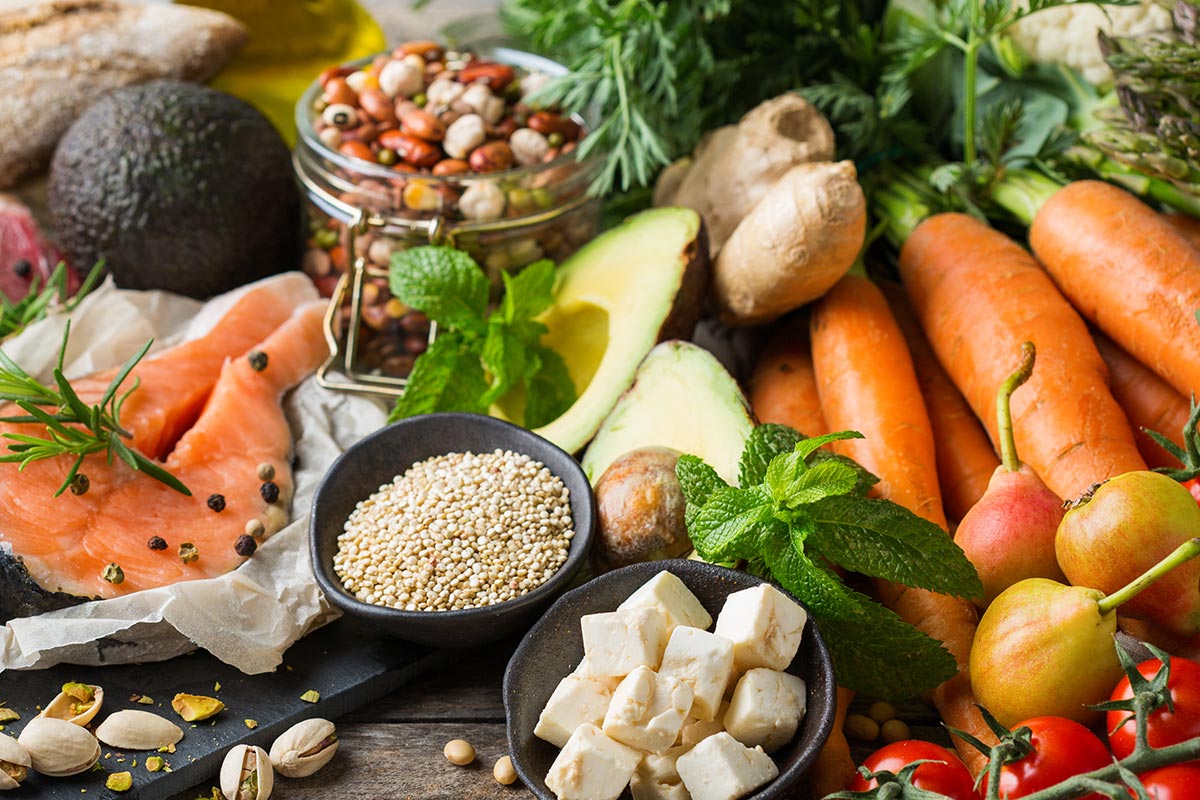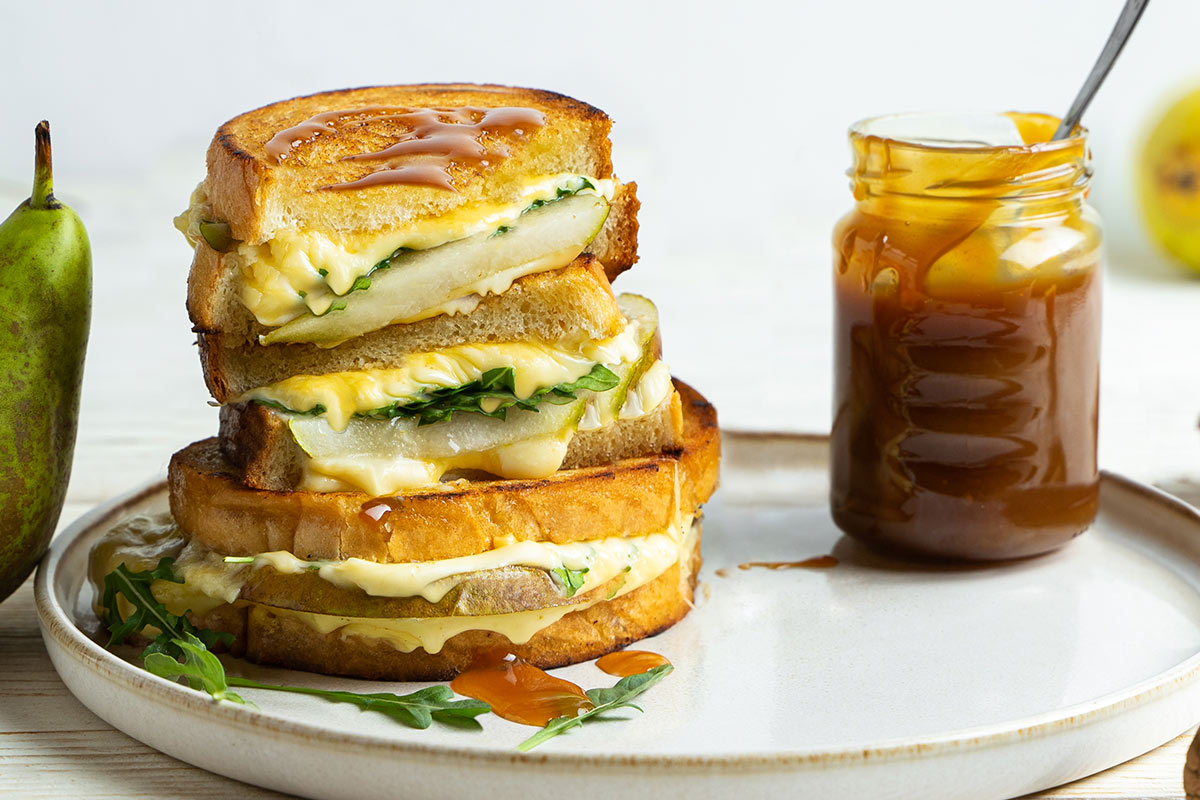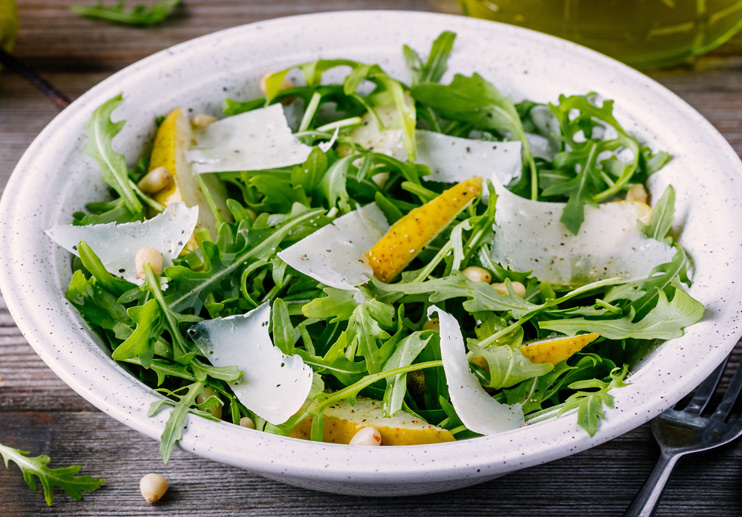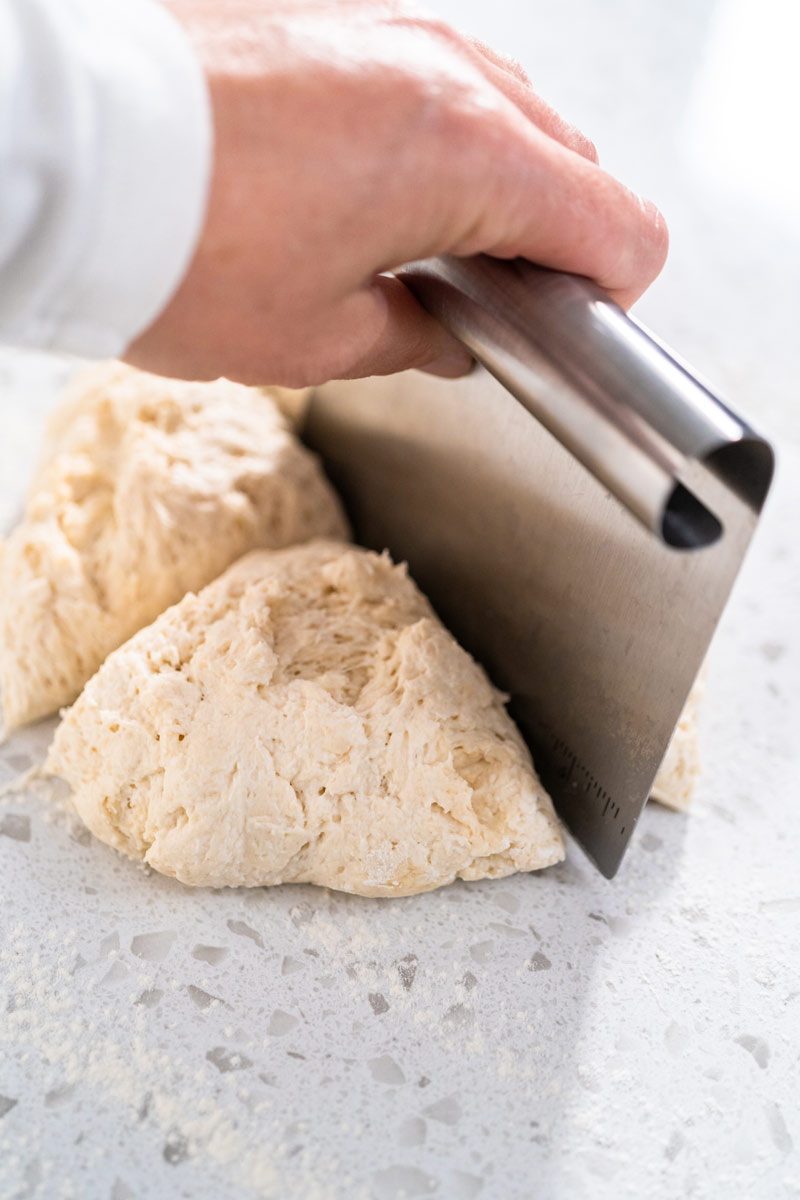Wilted Spinach Salad with Sherry Vinaigrette Recipe, Spotlight on Spinach, The Great Egg Debate Continues, and How Sleep Patterns Influence Health
Spinach salad is a perennial favorite, simple to prepare, satisfying, and chock-full of nutrients. Wilting the spinach before composing the salad was a foodie trend back in the 1970s (the fixings included mandarin orange segments, a nod to the value of eating a food containing vitamin C at the same meal as spinach to better access the green’s iron). My update adds the tasty crunch of hazelnuts. You’ll be intrigued by a new report that suggests fortified eggs may not pose the cholesterol risks of regular eggs. I’m also sharing the latest research on the perils of poor sleep—motivation to improve the quality of your shut-eye.
Wilted Spinach Salad with Sherry Vinaigrette
 Wilted Spinach Salad with Sherry Vinaigrette
Wilted Spinach Salad with Sherry VinaigretteFast-forward 50 years from wilted spinach salad’s debut to this version that offers all the benefits of olive oil in the dressing and the prep. Rather than bothering with croutons, try toasted slices of whole-grain bread for its hearty appeal.
Ingredients
For the vinaigrette:
- 1 tablespoon sherry vinegar, plus more to taste
- 1 tablespoon shallot, peeled and finely chopped
- 1 teaspoon fresh thyme, chopped
- 1/4 cup extra virgin olive oil
- Coarse salt and freshly ground black pepper to taste
For the salad:
- 3 tablespoons extra virgin olive oil
- 1 small red onion, chopped
- 4 ounces white or cremini mushrooms, thickly sliced
- 8 ounces baby spinach, rinsed and patted dry
- 2 garlic cloves, minced
- 2 medium- or hard-boiled eggs (your preference) quartered
- 1 ounce hazelnuts, coarsely chopped
- Optional: 2 slices whole grain bread, toasted and brushed with olive oil
Directions
Step 1
Make the vinaigrette: In a medium mixing bowl, whisk together the vinegar, shallot, and thyme. Gradually whisk in the olive oil until incorporated. Season to taste with salt and pepper.
Step 2
Heat a large frying pan or wok over medium heat. When hot, add 2 tablespoons olive oil and the red onions; sauté over medium heat until soft. Push them to the outside of the pan and add the mushrooms in one layer; cook until the edges have browned, then flip and brown on the other side. Transfer the vegetables to a bowl.
Step 3
Add the last tablespoon of olive oil to the hot pan along with the garlic and the spinach, adding the spinach by handfuls—as one batch starts to wilt, push it to the side and add another, stirring quickly. It should only take 2-3 minutes to do it all.
Step 4
Arrange the spinach in two large bowls and top with equal amounts of onions, mushrooms, eggs, and hazelnuts. Drizzle with the vinaigrette. If desired, add a slice of toast to one side of each bowl.
Makes 2 servings

Healthy Ingredient Spotlight
Spinach: Maximizing Its Nutrients

It’s no secret that, as a leafy green, spinach is a healthy food. What is less well known is that your body will better process two of its key nutrients, iron and calcium, when the spinach is cooked. That’s because it also contains oxalic acid, which blocks the minerals’ absorption unless the oxalates are broken down under high-heat cooking. If your recipe doesn’t include sautéing, another option is to plunge the spinach into boiling water for 60 seconds and then right into a bowl of ice-cold water to stop the cooking process and keep it a brighter green.
To get more of the iron when eating spinach raw, add a vitamin C food, like orange segments, to your meal.
Your body absorbs more folate and lutein when eating spinach raw, so varying your prep is a good idea.
More reasons to eat spinach: It’s also rich in vitamins K, C, A, E, and B6 as well as folate and riboflavin and in the minerals manganese, magnesium, copper, and potassium. It has many carotenoids, among other antioxidants, to protect cell health and guard against inflammation.

Quick Kitchen Nugget
A Better Type of Frozen Spinach
When fresh isn’t available, frozen can be a good substitute. The key to more flavorful frozen spinach is to select leaf spinach rather than chopped spinach. The leaves go through a lot less processing, translating to better taste and less freezer burn. Of course, look for pure spinach—no added salt or any other ingredients.

For Your Best Health
The Next Round in the “Are Eggs Healthy?” Debate
Because eggs contain some saturated fat, which is linked to higher cholesterol levels, there’s been much research on finding the right number of eggs to eat per week to help keep cholesterol in line. Results from a prospective controlled trial presented at the American College of Cardiology’s Annual Scientific Session offer positive news for egg lovers. One hundred and forty patients with or at high risk for cardiovascular disease were enrolled in the PROSPERITY study and divided into two groups to assess the effects of eating 12 or more fortified eggs a week versus a non-egg diet (fewer than two eggs a week) on HDL and LDL cholesterol and other key markers of cardiovascular health, including lipid, cardiometabolic, and inflammatory biomarkers and levels of vitamins and minerals. At the end of the four-month study period, cholesterol levels were similar in the two groups.
“We know that cardiovascular disease is, to some extent, mediated through risk factors like high blood pressure, high cholesterol, increased BMI, and diabetes. Dietary patterns and habits can have a notable influence on these, and there’s been a lot of conflicting information about whether or not eggs are safe to eat, especially for people who have or are at risk for heart disease,” said Nina Nouhravesh, MD, a research fellow at the Duke Clinical Research Institute in Durham, North Carolina, and the study’s lead author. “This is a small study, but it gives us reassurance that eating fortified eggs is OK with regard to lipid effects over four months, even among a more high-risk population.”
Dr. Nouhravesh and her team looked specifically at fortified eggs as they contain less saturated fat and have additional vitamins and minerals such as iodine; vitamins D, B2, 5, and 12; selenium; and omega-3 fatty acids. All the participants were 50 years of age or older (the average age was 66 years), half were female, and 27% were African American. All had experienced one prior cardiovascular event or had two cardiovascular risk factors, such as high blood pressure, high cholesterol, increased BMI, and/or diabetes.
Participants had in-person clinic visits at the start of the study and visits at one and four months to take vital signs and have bloodwork done; phone check-ins occurred at two and three months. People in the fortified egg group were asked about their weekly egg consumption, and those with low adherence were given additional educational materials.
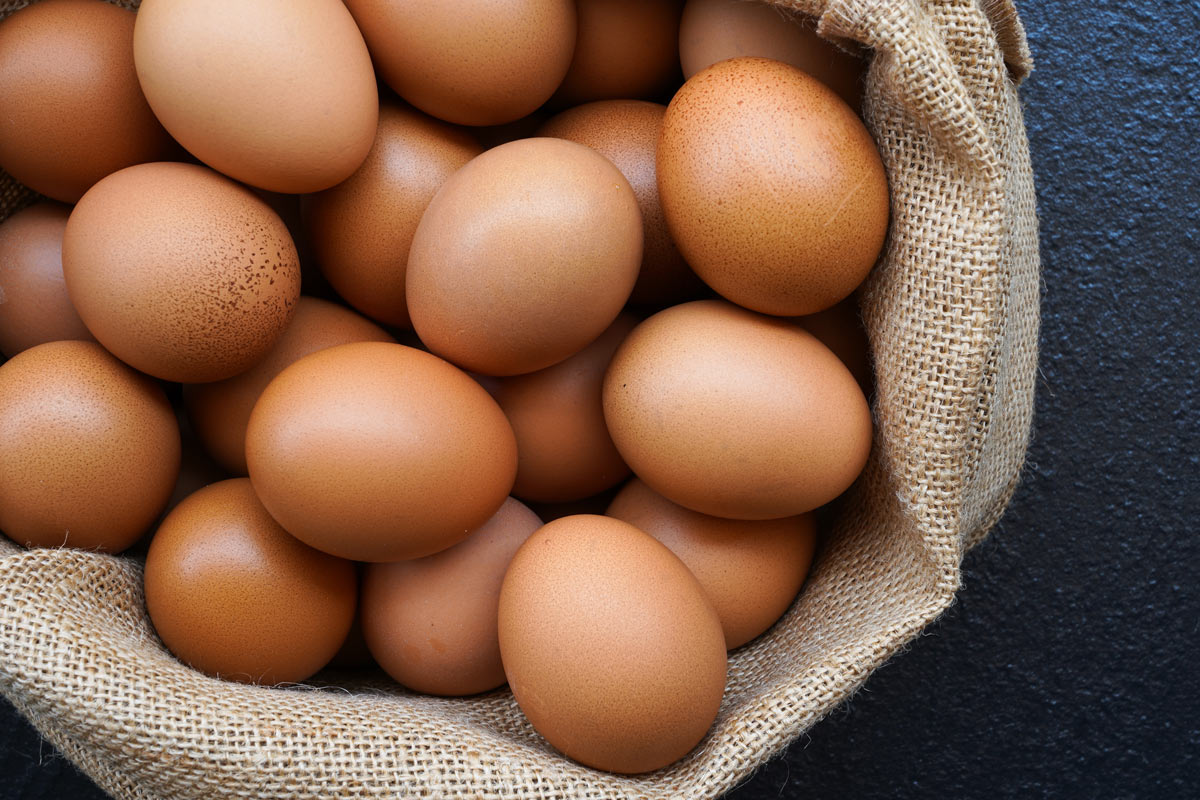
Results showed a -0.64 mg/dL and a -3.14 mg/dL reduction in so-called good HDL cholesterol and bad LDL cholesterol, respectively, in the fortified egg group. While not statistically significant, the differences suggest, according to the researchers, that eating 12 fortified eggs each week had no adverse effect on blood cholesterol. In terms of secondary endpoints, researchers observed a numerical reduction in total cholesterol, LDL particle number, another lipid biomarker called apoB, high-sensitivity troponin (a marker of heart damage), and insulin resistance scores in the fortified egg group, while vitamin B increased.
“While this is a neutral study, we did not observe adverse effects on biomarkers of cardiovascular health and there were signals of potential benefits of eating fortified eggs that warrant further investigation in larger studies as they are more hypothesis generating here,” Dr. Nouhravesh said, explaining that subgroup analyses revealed numerical increases in HDL cholesterol and reductions in LDL cholesterol in patients 65 years or older and those with diabetes in the fortified egg group compared with those eating fewer than two eggs.
Note that what you eat with your eggs counts: buttered toast and bacon and other processed meats are not heart-healthy choices. As always, Dr. Nouhravesh said, it’s a good idea for people with heart disease to talk with their doctor about a heart-healthy diet.
It’s important to point out that this was a single-center study with a small size and reliance on patients’ self-reporting of their egg consumption and other dietary patterns. It was also an unblinded study, which means patients knew what study group they were in, which can influence their health behaviors, and it was funded by Eggland’s Best, a company that offers eggs from cage-free and pasture-raised/free-range hens.

Fitness Flash
How Your Sleep Pattern Influences Your Health
Poor sleep habits are strongly associated with long-term chronic health conditions, according to decades of research. To better understand this relationship, researchers led by Soomi Lee, PhD, associate professor of human development and family studies at Penn State’s College of Health and Human Development, identified four distinct patterns that characterize how most people sleep and how they correlate to overall health. Results were published in Psychosomatic Medicine.
Using a national sample of adults from the Midlife in the United States (MIDUS) study, they gathered data on approximately 3,700 participants’ sleep habits and chronic health conditions across two time points 10 years apart. The data included self-reported sleep habits, including sleep regularity and duration, perceived sleep satisfaction, and daytime alertness, as well as the number and type of chronic conditions they had.
With that information, the researchers identified these four different sleep patterns:
- Good sleepers with optimal sleep habits across all data points
- Weekend catch-up sleepers with irregular sleep, specifically short average sleep duration, but longer sleep times on weekends or non-workdays
- Insomnia sleepers with sleep problems related to clinical insomnia symptoms, including short sleep duration, high daytime tiredness, and a long time to fall asleep
- Nappers with mostly good sleep but frequent daytime naps
The MIDUS study may not represent the entire population, researchers said, as it primarily comprises healthy adults, but they still found that more than half the participants were insomnia sleepers or nappers, both suboptimal sleep patterns. Additionally, being an insomnia sleeper over the 10-year period was associated with a significantly higher likelihood of chronic health conditions, including cardiovascular disease, diabetes, and depression. Results also showed that people were unlikely to change their sleep pattern over the course of the 10 years, especially the insomnia sleepers and nappers.
“These results may suggest that it is very difficult to change our sleep habits because sleep health is embedded into our overall lifestyle. It may also suggest that people still don’t know about the importance of their sleep and about sleep health behaviors,” Dr. Lee said. “We need to make more efforts to educate the public about good sleep health. There are sleep hygiene behaviors that people could do to improve their sleep, such as not using cell phones in bed, exercising regularly and avoiding caffeine in the late afternoon.”
While the sleep patterns were seemingly not age-related, researchers found that older adults and retirees were more likely to be nappers. They also found that those with less education and those facing unemployment were more likely to be insomnia sleepers.
According to Dr. Lee, the fact that phase of life and economic conditions can influence long-standing sleep patterns suggests that societal and neighborhood influences—including economic stressors and access to health resources—may have significant effects on individual health and, in this case, sleep habits.
The researchers added that their findings strongly suggest the need for programs and interventions to promote healthy sleep and sleep habits and that such programs should not be one-size-fits-all but rather should be targeted based on a variety of factors, including the risk of chronic conditions and socioeconomic vulnerability.
“Sleep is an everyday behavior,” Dr. Lee said. “Sleep is also modifiable. So, if we can improve sleep almost every day, what outcomes might we see after several months, or even several years? Better sleeping habits can make many significant differences, from improving social relationships and work performance to promoting long-term healthy behaviors and healthy aging.”
According to the CDC, these good habits can help improve sleep health:
- Go to bed at the same time each night and get up at the same time each morning, weekends included.
- Keep your bedroom quiet, dark, and at a cool, comfortable temperature.
- Keep all electronic devices, including laptops and cell phones, out of your bedroom.
- Skip large meals, caffeinated drinks, and alcohol before bed.
- Get some exercise during the day—it should



















